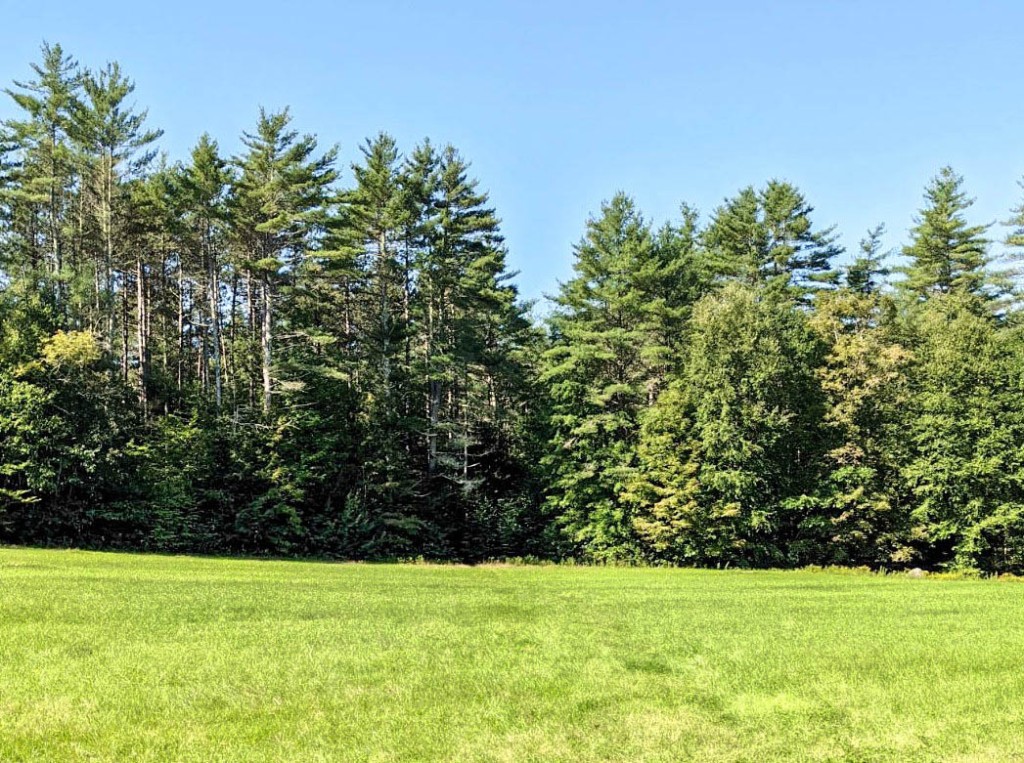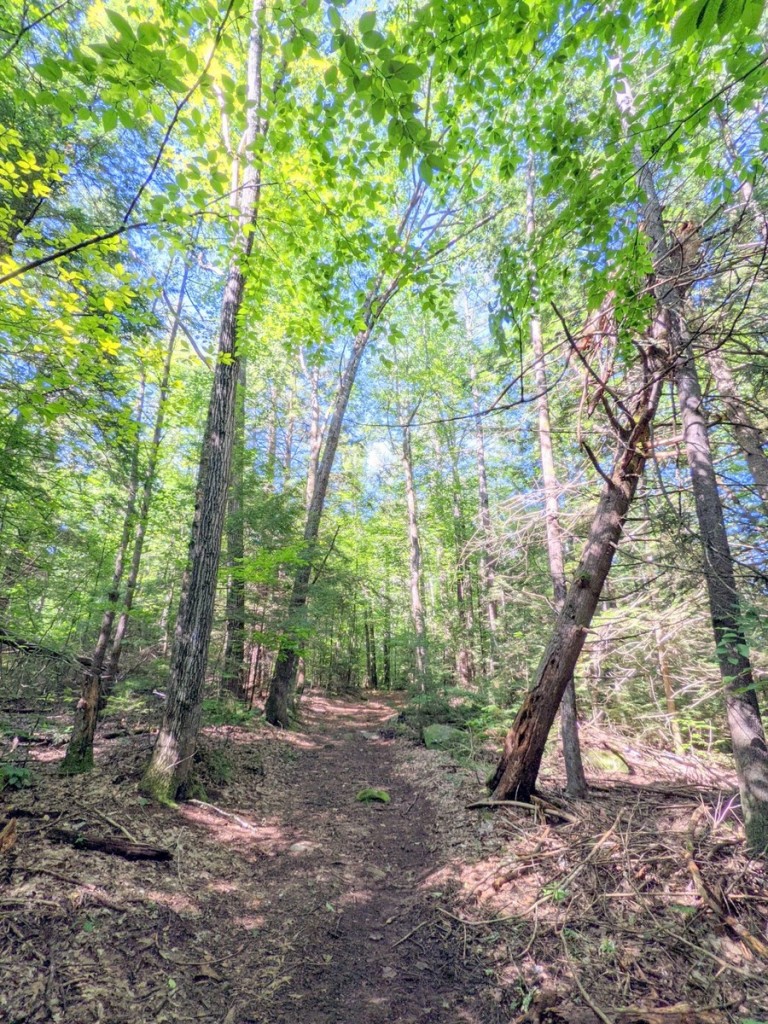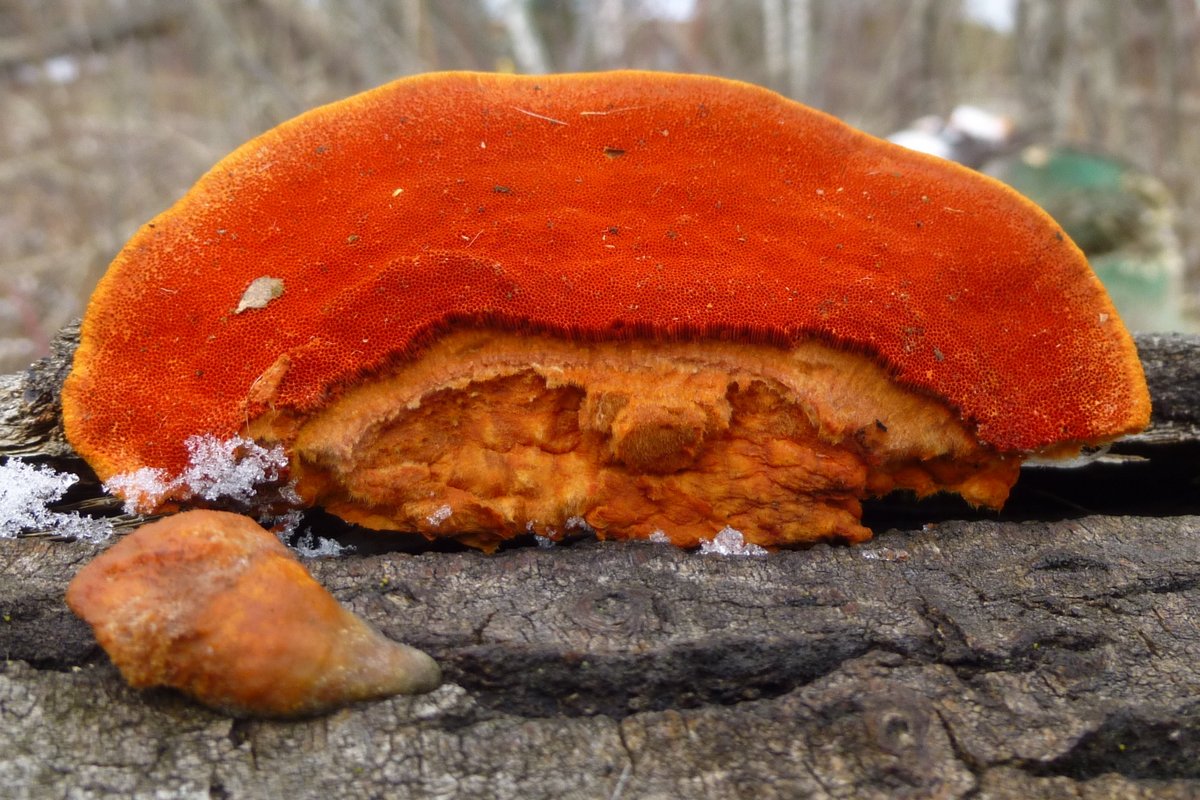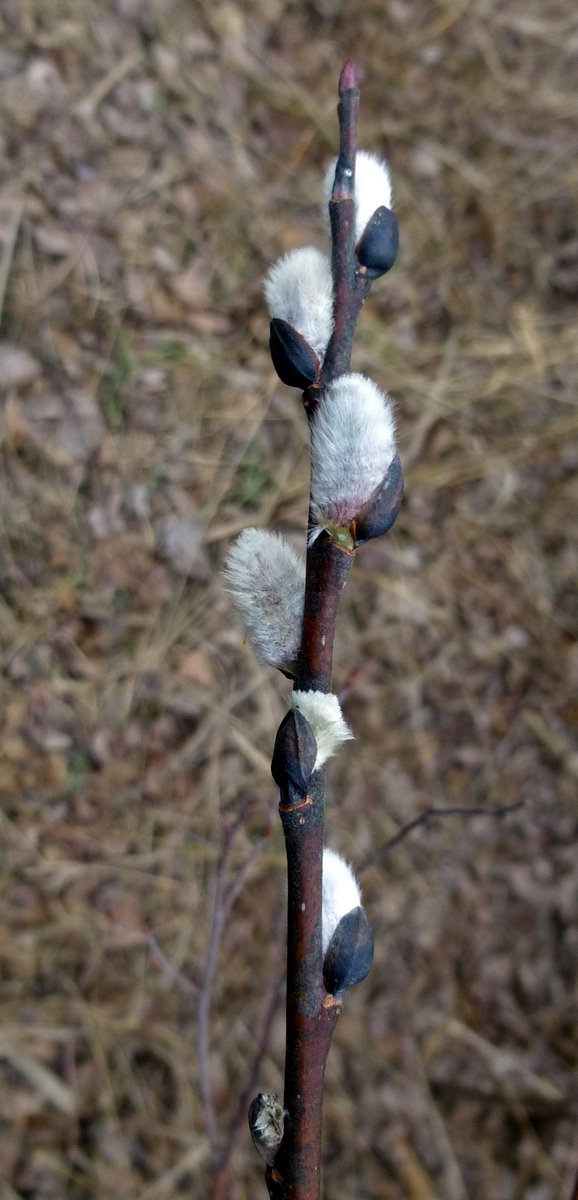
It comes in waves. News of the war between the Edgewood Civic Association and the Federal Aviation Administration will suddenly erupt in the local newspaper and then, after a few weeks, will disappear until the next eruption, and it’s been happening for as long as I can remember. The crux of the whole argument is about tree cutting in Edgewood Forest and it hinges on whether or not a 1983 amendment to the original deed, which said that trees on the property “may be cut or topped in order that they will not constitute an obstruction to air navigation,” is legal and binding. Residents say it isn’t, because the parties involved lacked the authority to make such an agreement, and the city of Keene says it is legal. In the end it seems that it will be up to the courts to decide but the original deed did say there was to be no tree cutting allowed on this deeded parcel.

Injunctions are filed and other court procedures go on, but meanwhile so does tree cutting. A friend told me about this tree topping and when I saw it, I couldn’t imagine why anyone would go to all of the trouble to top trees when they could have just cut them down. If they had cut them down, they wouldn’t have needed all the equipment it must have taken to lift them to such lofty heights to cut the tops off. Now of course, all of these trees are dead and will fall, and some are mere feet from the main trail.

The topped trees are also not too far from the many wires that follow this trail.

I don’t know what the W stands for on this huge old pine tree, but I’d say it’s a fair bet that it isn’t wisdom. Since our tallest trees are white pines which these days might reach 150 feet on a good day, and by law aircraft cannot fly “closer than 500 feet to any person, vessel, vehicle, or structure,” I don’t know what all the fuss is about. It seems to me that if a plane hits a tree, it was flying far too low and was breaking the law. It seems simple, but I’m not a pilot.

On this day I just wanted to wash my hands of the whole thing and go into the woods. Or what’s left of them, anyhow.

There is something about the place, probably the fact that the soil has lain undisturbed for so long, that draws many native wintergreen plants that you don’t see anywhere else, like striped wintergreen (Chimaphila maculata.) It is my favorite of the native evergreens because I like the way its foliage turns deep purple in cold weather. The Chimaphila part of the scientific name is from the Greek cheima (winter) and philein (to love,) so it loves winter and does not die from the cold. It is relatively rare; I know of only two or three places where small colonies grow.

Trailing arbutus (Epigaea repens) also grows here in great numbers. In spring its small white to pink, very fragrant flowers appear and that’s why it was once over-collected into near oblivion. In fact my grandmother and I looked for it for years and never could find any. Though it looks like a groundcover botanically speaking it has a persistent woody stem, so it is classified as a shrub. These days it can be found at many nurseries but it’s very fussy unless it’s given the right amount of light, water, nutrients and soil type. That’s true of many of our native evergreens, in fact. They want to grow where they want to grow.

Shinleaf (Pyrola elliptica) is another of our native wintergreens that grows in large numbers here. It’s interesting to me how so many native evergreens have chosen this place to grow in. Other than the long undisturbed soil I don’t know what the attraction would be. It might also have something to do with the humidity level as well, because there is plenty of water in the area. Shinleaf’s common name from the way Native Americans used it as a poultice to heal wounds; especially shin wounds, apparently. Like several other native wintergreens it contains compounds similar to those in aspirin and a tea made from it was used to soothe many ailments.

Fan shaped clubmoss (Diphasiastrum digitatum) grow fairly well here but I haven’t seen large numbers of them. They’re pretty clubmosses that look quite different from others, and that means they’re easy to identify. They were once collected almost into oblivion for Christmas wreaths, and not that long ago. I can remember seeing clubmoss Christmas wreaths. That’s why I don’t usually tell anyone specifically where they grow.

I saw quite a few dead fan shaped clubmosses here, which is something I’ve never seen before. I hope it doesn’t signal something ominous.

Years ago I found a single downy rattlesnake plantain orchid growing behind a tree so I marked the tree with my pocket knife so I could find the orchid again. Of course the tree grew, its bark healed my little X mark over, and I couldn’t find it or the orchid again. Then, on this day I found another orchid just sitting there, not by any tree at all, and that means they are spreading. I’m very happy about that because they’re a beautiful little plant. And I do mean little; this one would fit in a teacup with room to spare. The flowers look like tiny white teapots and are very hard to photograph.

There is quite a lot of swamp land in Edgewood Forest and this particular spot is rich in peat mosses.

I have enough trouble identifying mosses without taking on the peat mosses but I do like to see them. This one seems to turn bright yellow in winter. I keep hoping to find spore capsules on them but since there are over 380 species of sphagnum peat mosses, I never really know what species I’m looking at.

Swamp dewberry (Rubus hispidus) leaves turn a nice purple color in winter but they will stay on the plant under the snow. It’s a trailing plant with fruit like a black raspberry and its stems are every bit as prickly. It also looks a lot like a strawberry when it’s pretty white flowers bloom.

Young yarrow plants grew here and there. Considered one of the nine “Holy herbs” by ancients, this plant has been healing mankind since before recorded history, important enough to be traded from one country to another until now it is found in nearly every country on earth. The young leaves are very feathery and very pretty.

It looked like these pear-shaped puffballs had puffed out all their spores already. People have gotten deadly lung infections from inhaling puffball spores so It’s really best to just let them be.

Lumpy bracket fungi (Trametes gibbosa) grow on many species of hardwood logs. They’re usually white or cream colored but I think this one had some algae growing on it, which is said to be common. These fungi decompose wood by causing white rot.

The pores on a lumpy bracket fungus look as if they’ve been stretched and look maze like, unlike the round pores found on a turkey tail fungus.

For years now I’ve seen this yellow crust fungus on conifers and though I once believed it was the conifer parchment fungus (Stereum sanguinolentum,) now I’m not so sure. The examples I see are always very dry and thin, almost as if they were part of the bark, and they are hard enough so, though I try to dent them with my fingernails, they remain undamaged. What I see here in this photo does not match the conifer parchment fungi I see online so for now, I’m still in the dark.

Powdery mildew grew on oak leaves. Powdery mildew is a fungal disease which usually grows where there is little direct sunlight, high humidity and poor air circulation. Some plants like bee balm, lilacs, and grape vines seem particularly susceptible to it. I think this is the first time I’ve noticed it on oak.

Because bracket fungi like birch polypores grow with their spore bearing undersides pointed toward the ground you can always tell if they grew before or after a tree fell. All of these grew after this birch fell.

A huge old birch tree had two trunks but one fell away, leaving what you see here. I thought the colors and grain patterns were beautiful. I wish I could make a table top from it.

Last year a group of volunteers came together to remove invasive water chestnut plants from this swamp that borders Edgewood Forest. Water chestnut is native to Eurasia and Africa, and was brought to the U.S. in the 1870s as an ornamental. The plants form a thick mat on the surface and crowd out natives. It was nice to see them gone from this spot and nice to know that people worked together in a place that has been so divided for so long. That’s exactly what needs to happen here.
In any conflict there are always three sides; two opposing and the innocent who are caught in the middle. ~A.J. Garces
Thanks for coming by.































































































































































 Foamflower (Tiarella) is another native evergreen whose fuzzy leaves sometimes turn deep purple in the fall. More often than not though, they look a little blotchy like those in the photo.
Foamflower (Tiarella) is another native evergreen whose fuzzy leaves sometimes turn deep purple in the fall. More often than not though, they look a little blotchy like those in the photo.  In the book Forest Forensics, Tom Wessels describes white pine (Pinus strobus) and eastern hemlock (Tsuga canadensis) stumps as “decaying from the outside in.” He also says that it takes 50 years for the wood to completely decay. I’m guessing that this is the stump of a white pine because hemlock has rot resistant bark that is usually still in place even when the wood has completely decayed.
In the book Forest Forensics, Tom Wessels describes white pine (Pinus strobus) and eastern hemlock (Tsuga canadensis) stumps as “decaying from the outside in.” He also says that it takes 50 years for the wood to completely decay. I’m guessing that this is the stump of a white pine because hemlock has rot resistant bark that is usually still in place even when the wood has completely decayed. 
 I like the little cups formed by the bracts on common witch hazel (Hamamelis viginiana.) These bracts are at the base of the flower and are where a single brown, box shaped seed capsule will develop over the course of a year. Next autumn these seed capsules will open quickly with a loud snapping sound and shoot the seeds as far as 40 feet from the parent plant. I find native witch hazel shrubs growing along river banks here in New Hampshire.
I like the little cups formed by the bracts on common witch hazel (Hamamelis viginiana.) These bracts are at the base of the flower and are where a single brown, box shaped seed capsule will develop over the course of a year. Next autumn these seed capsules will open quickly with a loud snapping sound and shoot the seeds as far as 40 feet from the parent plant. I find native witch hazel shrubs growing along river banks here in New Hampshire.
 The ground hasn’t frozen yet so mushrooms are still growing. I see mostly small brown types but this pinkish tan one was growing in the middle of a trail. I think it might be one of the Russulas.
The ground hasn’t frozen yet so mushrooms are still growing. I see mostly small brown types but this pinkish tan one was growing in the middle of a trail. I think it might be one of the Russulas.  Native pipsissewa (Chimaphila umbellata ) seed capsules haven’t opened yet. At one time this plant, one of the wintergreens, was an ingredient of root beer. Native Americans had many medicinal uses for the plant and the name pipsissewa is Cree for “it breaks into small pieces.” This is in reference to their belief that the plant broke up gall and kidney stones. The scientific name Chimaphila is from the Greek ceima,”winter”; and filos “lover” because it is evergreen.
Native pipsissewa (Chimaphila umbellata ) seed capsules haven’t opened yet. At one time this plant, one of the wintergreens, was an ingredient of root beer. Native Americans had many medicinal uses for the plant and the name pipsissewa is Cree for “it breaks into small pieces.” This is in reference to their belief that the plant broke up gall and kidney stones. The scientific name Chimaphila is from the Greek ceima,”winter”; and filos “lover” because it is evergreen. Running ground pine (Lycopodium clavatum) is actually a type of clubmoss. The horizontal branching stems can cover large areas. Here it grows among mosses, American wintergreen (Gaultheria procumbens,) and fallen beech leaves.
Running ground pine (Lycopodium clavatum) is actually a type of clubmoss. The horizontal branching stems can cover large areas. Here it grows among mosses, American wintergreen (Gaultheria procumbens,) and fallen beech leaves.  I found this dandelion blooming happily on November 23rd. It still has a ways to go to beat the record of the December 21st bloomer I saw last year.
I found this dandelion blooming happily on November 23rd. It still has a ways to go to beat the record of the December 21st bloomer I saw last year.  This goldenrod seed head was leaning out over water, which made for a very dark background.
This goldenrod seed head was leaning out over water, which made for a very dark background.